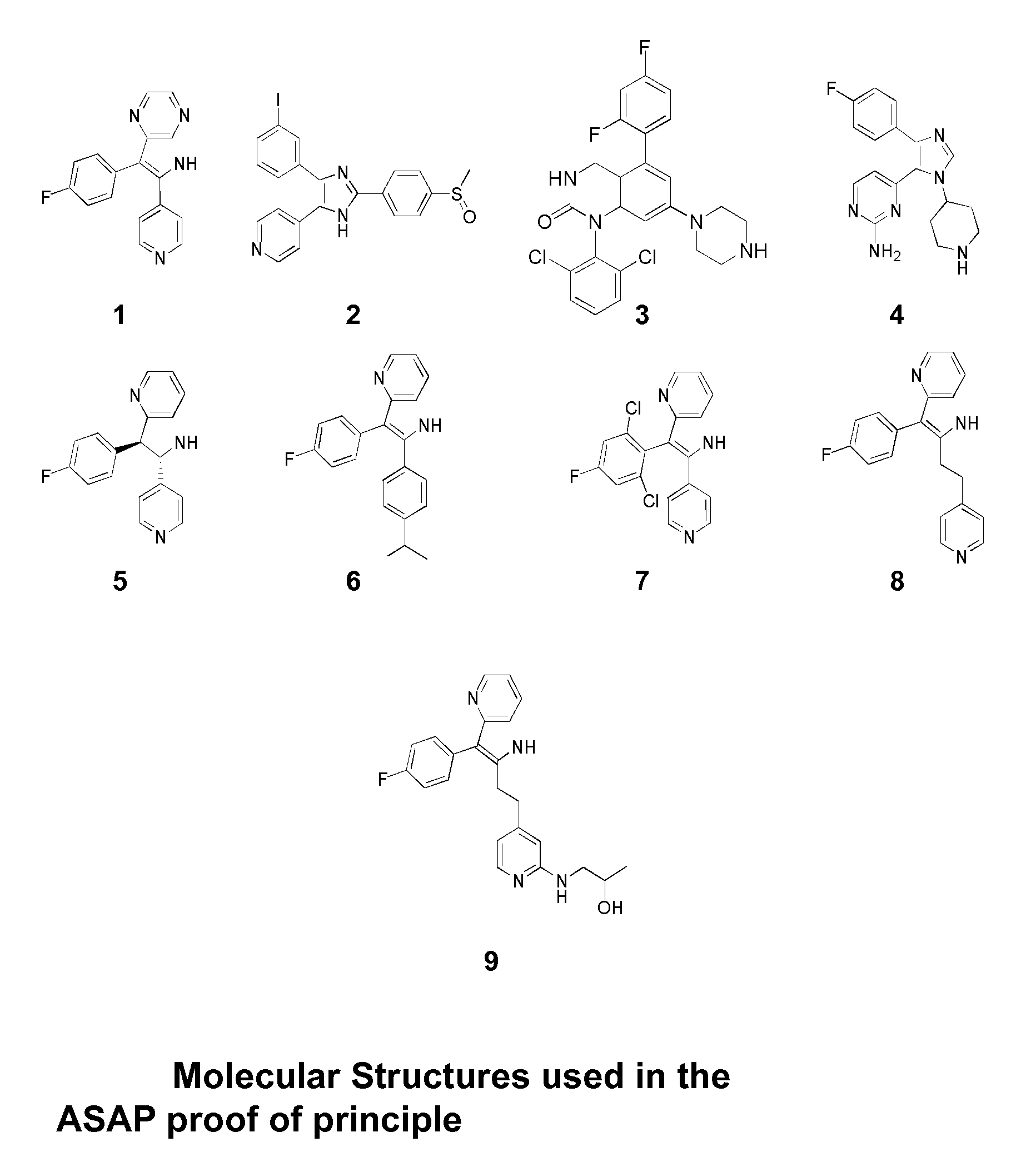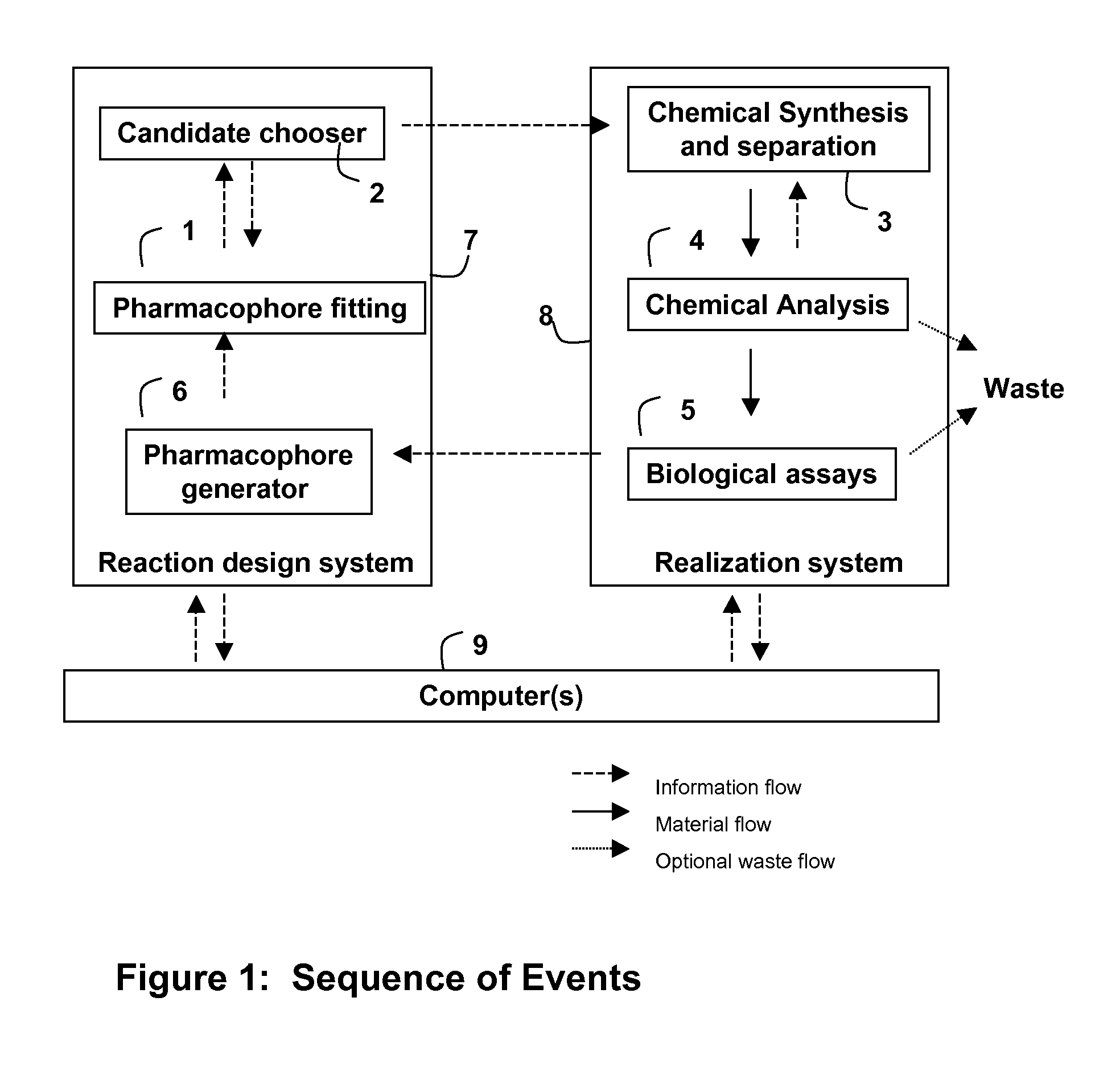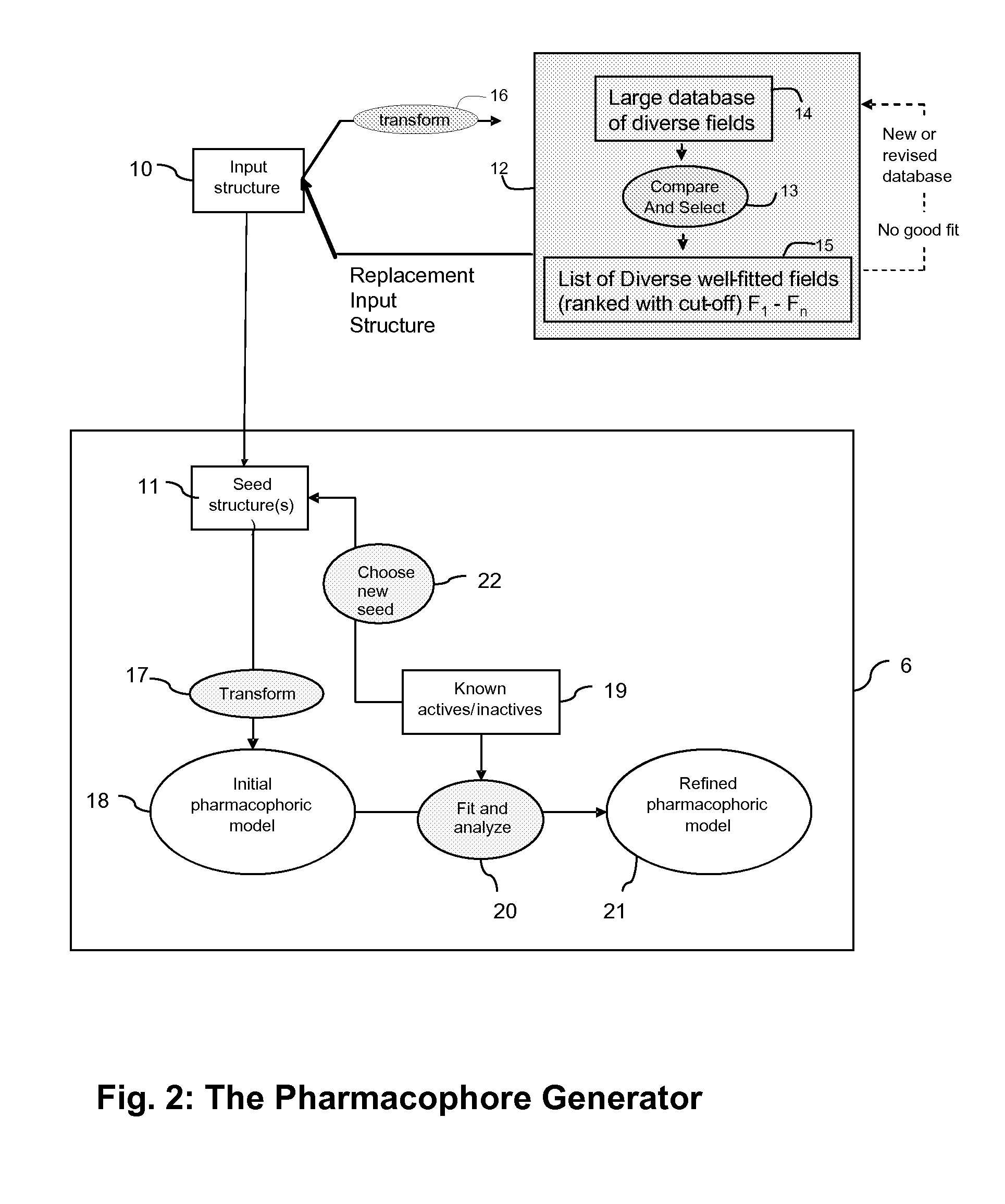Automated iterative drug discovery and synthesis
a drug discovery and synthesis technology, applied in the field of automated iterative drug discovery, can solve the problems of limited diversity of compounds, and achieve the effect of avoiding the multiplicity of compounds inherent in the nature of the compound
- Summary
- Abstract
- Description
- Claims
- Application Information
AI Technical Summary
Benefits of technology
Problems solved by technology
Method used
Image
Examples
example 1
The Realization System
[0179]There are many ways of constructing a Realization System. The invention, the “Reaction Design System”, as contemplated herein, is essentially device independent and there is no reason why it could not instruct a human workforce. However, experience has shown that in human hands and at human manual scale this type of strategy is too slow and expensive to provide an economic or timely solution for the evaluation of screening hits from many chemical families to identify the most promising lead series although its principles are used in late stage optimization of leads where only a relatively small number (e.g. 2 or 3) lead series are under consideration.
[0180]Thus the notion of exploring in a divergent manner all of the chemotypes presented by the hits identified in a high throughput screening run as starting points for biological data driven chemical programs to identify novel chemotypes not present in the screening collection is beyond current manual and a...
example 2
The Reaction Design System
[0194]In assessing the performance of the System no example can be definitive because there is no end to the optimization with an almost infinite universe of chemical opportunity. If the “lead” is the best molecule available at any moment (by whatever parameters we are judging) then identifying a better compound displaces it. The new compound then becomes the “lead”. To provide an example, we impose a limit such as time, number of compounds, number of iterations, etc., knowing that due to the iterative nature of the process, whatever is best at a moment may not be the best ultimately if further iteration brings that lead series to a blank wall. We may need to return to choose an alternative to an earlier choice from other molecules showing potential.
[0195]In fact, it is the nature of the algorithm that we have a cohort of molecules proceeding forward which we select from according to some rules of priority. The best indication that the invention does what i...
example 3
The Reaction Design System
[0201]a) An ASAP system process (FIG. 8)
[0202]A field scoring-based pharmacophore of the inhibitor (molecule 1), with low activity against p38 MAP kinase, was used as a starting seed onto which three other field pharmacophores of known structurally diverse inhibitors (molecules 2-4) were aligned. The ASAP module of the Reaction Design System then combined the information from all four ligands to produce a refined starting field pharmacophore from which it indicated a list of possible molecules to be made and tested. Molecules 5-8 were at hand from the literature and structures and biological results of these four compounds could be used as if they had exited from the Realization System. The compounds were fed back into the Reaction Design System to further modify and refine the model. More new compounds were derived from this second generation model by the ASAP and passed to the Realization System. One of these (molecule 9) was found to have been reported i...
PUM
 Login to View More
Login to View More Abstract
Description
Claims
Application Information
 Login to View More
Login to View More - R&D
- Intellectual Property
- Life Sciences
- Materials
- Tech Scout
- Unparalleled Data Quality
- Higher Quality Content
- 60% Fewer Hallucinations
Browse by: Latest US Patents, China's latest patents, Technical Efficacy Thesaurus, Application Domain, Technology Topic, Popular Technical Reports.
© 2025 PatSnap. All rights reserved.Legal|Privacy policy|Modern Slavery Act Transparency Statement|Sitemap|About US| Contact US: help@patsnap.com



